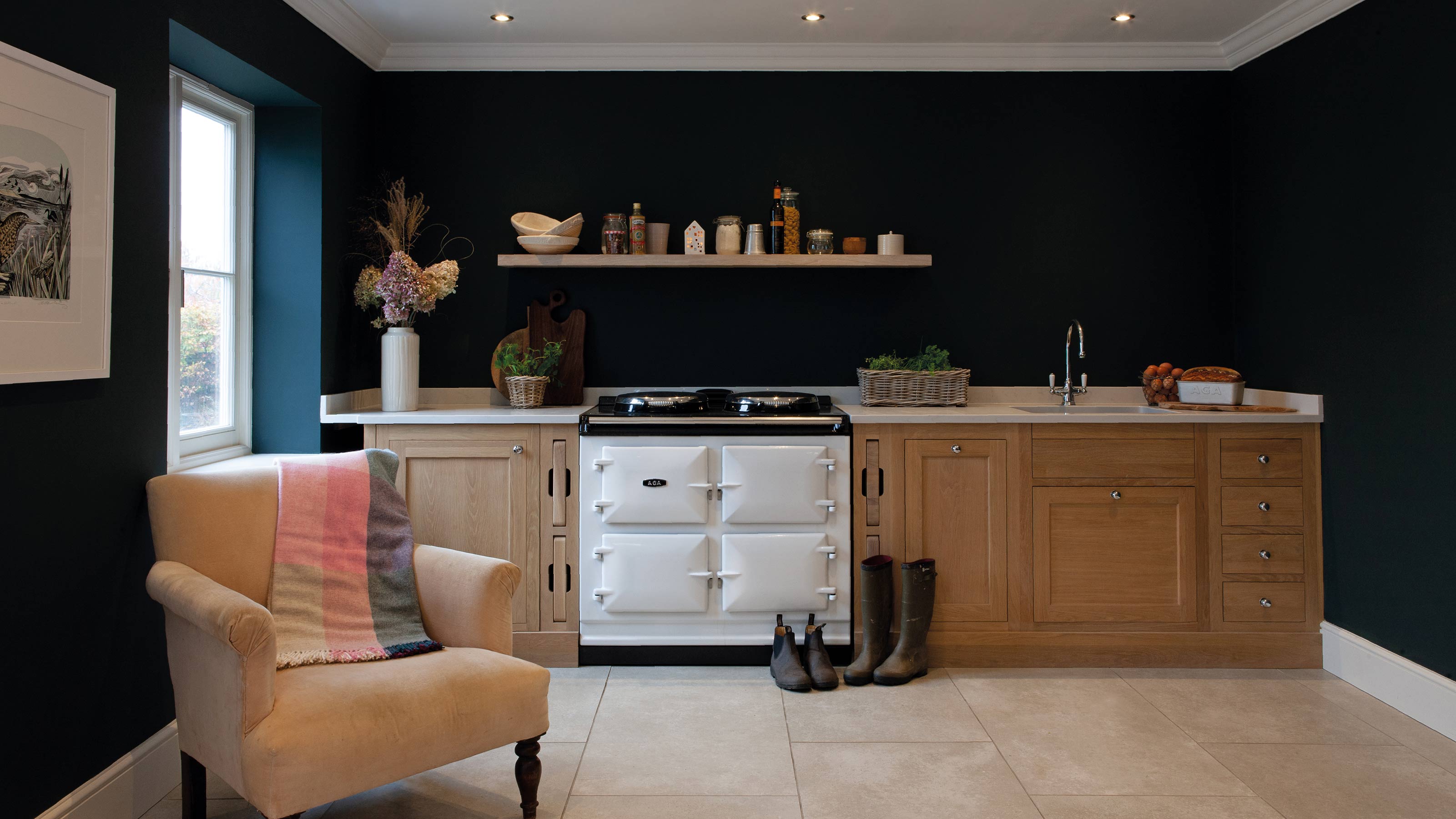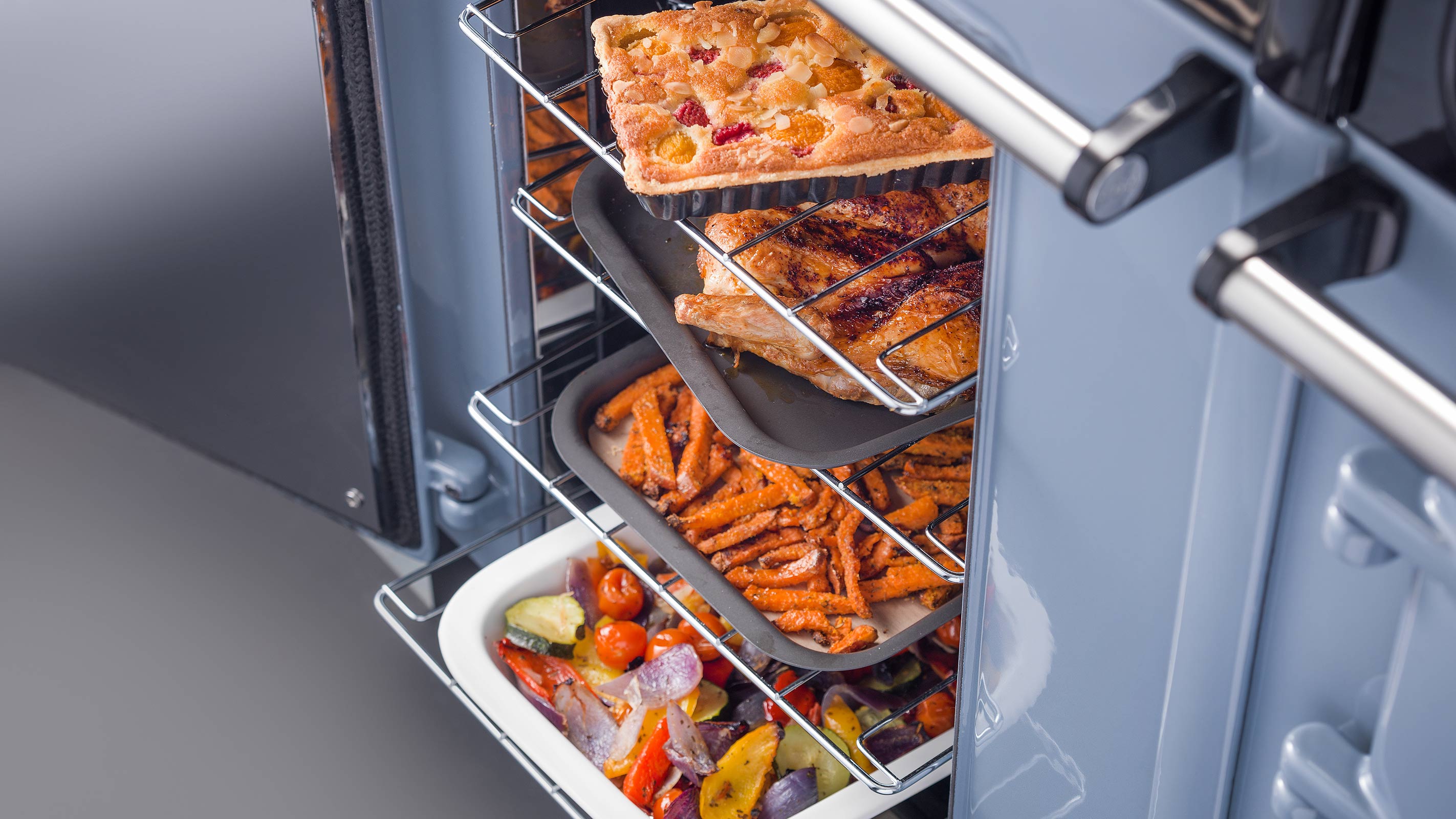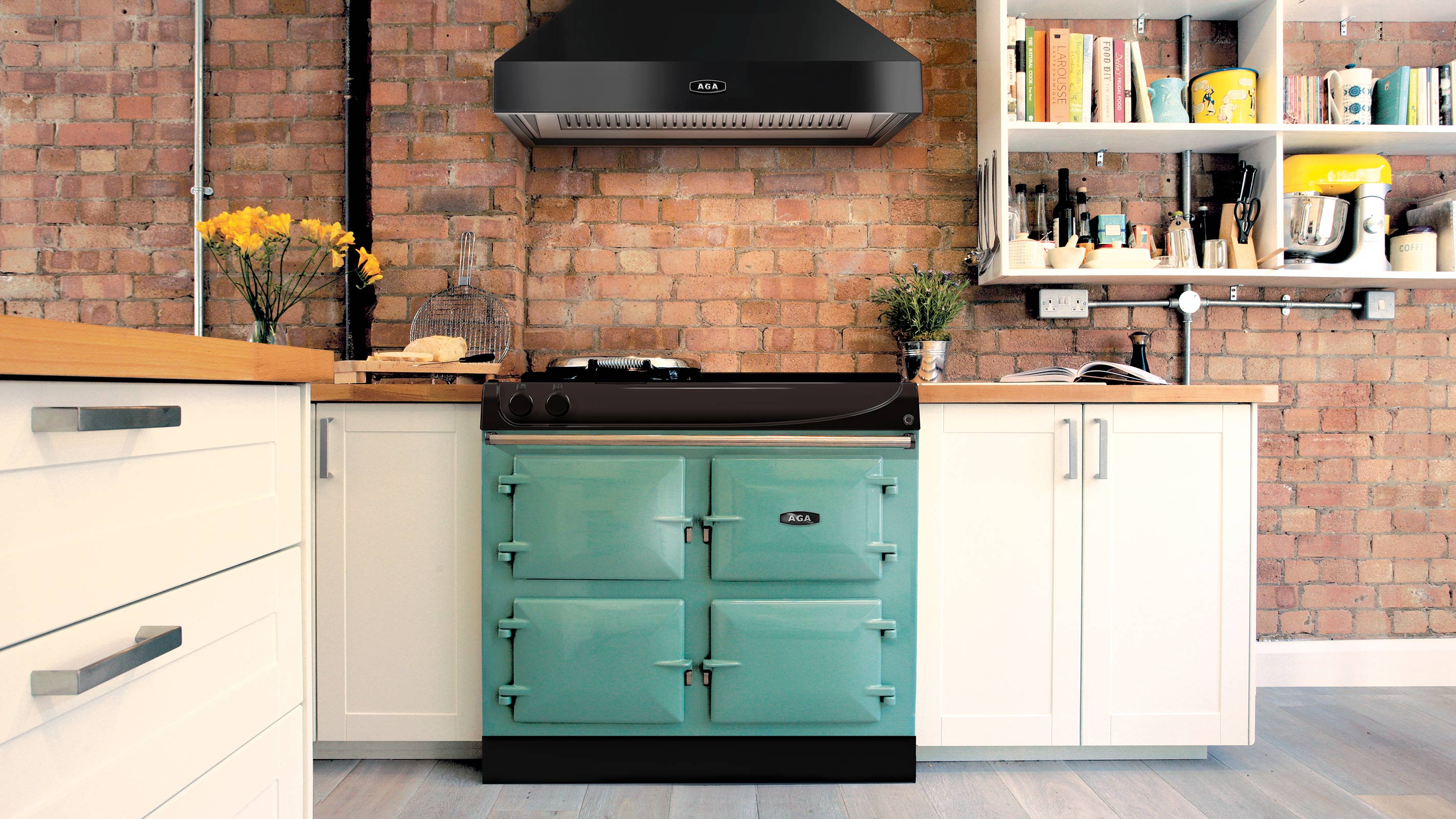Are AGA running costs really that high? We take a closer look at the kitchen classic
There's no doubting its beauty, but the 100-year-old AGA has been accused of being expensive to run. We look at the costs and whether they really are as high as claimed

Despite it's characterful appearance, the kitchen classic has suffered some bad press over the years surrounding AGA running costs. While it clearly hasn't discouraged some, others might have been tempted to steer away from adding one to their kitchen design. But how true is it; are AGAs really that expensive to run or are newer designs all about economy?
The AGA was first created in 1922 by Dr Gustaf Dalén, a Swedish physicist who was blinded in an accident. While recovering at home, he became aware of how dangerous and inefficient the old range used by his wife was and so began developing a cooking technique that would be clean, simple to operate, produced excellent food and was economical to run.
Of course much has changed during the 100 years since the AGA's invention, but the love of its practical design has endured. We look at what an AGA might cost you to run and how you can ensure you are using it efficiently, whether it be an inherited older model or a new addition.
The difficulty with AGA running costs
Unfortunately, there is no simple answer or set of figures to explain what AGAs cost to run.
"It's really tricky with AGA running costs as everyone uses them differently," explains AGA's Laura James. "It is a bit like trying to work out car running costs — it all depends on the model you drive and how you use it."
All newer models of AGA are now electric, but owners of older models or those who have moved into a property and have inherited an AGA may well find theirs relies on a different fuel source, such as oil. Of course this will also affect how much any particular model costs to run.
"Since its invention, the AGA has evolved to use the very best fuel available at the time," explains Laura. "The original models ran on solid fuel such as logs and coal, before oil, gas and eventually electric models were launched."
Cookery presenter and AGA demonstrator Naomi Hansell explains that they were originally designed to provide a really cost-effective way of cooking and living.
"When they were originally designed, running on solid fuel, then oil and gas, they would cost £10 per week in old money run — and that is still my target today."
How do AGAs work?
AGA cookers use radiant heat to cook food. The heat produced is transferred to the cast-iron ovens – each of which is set at a different temperature to provide a different function – and is gradually and evenly released from all surfaces, ensuring a gentler cooking process.
"Food cooked in this way is moist — no basting required," says Naomi. "Potatoes are crispy on the outside and fluffy in the middle and joints are juicy having been cooked long and slow."
Standard AGAs feature three cooking zones in three or more ovens (apart from the AGA 60 which combines two cooking zones in one of its two ovens.)
There is a 'roasting' oven which is really hot for things like pizza, a 'baking' oven set at a medium temperature, and a 'simmering' oven, perfect for steaming, slow cooking and so on.
Cast iron hot plates are a standard feature — usually a 'simmering plate' and a 'boiling plate'. However, larger models can be specified with additional ceramic or induction hobs as well as the hotplates, or instead of.
Of course all of these options and extras make it even more difficult to state firm running costs.

What fuel do AGAs run on?
New AGAs are now fully electric and if you have your heart set on an AGA, it is worthwhile looking into using a form of renewable energy to run it.
"One of the reasons we put all our research and development effort and resources into models that ran on electricity is that it means customers can benefit from renewable energy sources, such as solar power and ground-source heat pumps, as well as buying from green energy suppliers," explains Laura James. "We have an AGA demonstrator who has solar panels at home and generates enough energy to run her AGA almost for free during daylight hours. It makes huge sense for anyone with an electric AGA to investigate solar panels. "
What do old AGAs cost to run?
If have recently purchased a house or renovation project with an AGA already installed, you are likely to be wondering what it is going to cost you to cook on.
Old AGAs were designed to be on all the time — although those lucky enough to also own separate electric ovens and hobs could opt to turn the AGA off in the summer months to avoid overheating.
These older models were great in days gone by, when it was less usual for all members of the household to be out at work all day and more common for all meals to be cooked at home. Now, however, running and paying for a cooker you are not using 24/7 can feel rather uncomfortable — particularly in light of ever-rising fuel costs.
"Old AGAs – where everything is on all the time – can cost £50 per week or more to run," says Naomi. "My advice if you have one? Change it!"
What do new AGAs cost to run?
Today, all AGAs run on electricity and there is a huge range of models all designed to suit different ways of life. Each model is also really flexible in how you use it.
"You can turn the tops of the AGA off completely when you don't need them, run the ovens on 'slumber' mode or set them on a timer to come on and off as and when you want them to be ready for use," explains Naomi.
"You can kind of split AGAs into two families — 'E' or 'R' versions," continues Naomi, who has the E Series 7 model at home. "The E Series has separate controllable tops that take just five minutes to heat up from cold. The ovens take around 22 minutes to heat up to simmer from cold and from simmer to full temperature takes around 15 minutes."
Naomi describes herself as a 'heavy AGA user' and after a week of keeping her AGA on slumber when not in use and using it at full temperature to cook meals all week, as well as for entertaining friends over a full weekend, says it cost her £17 per week.
"However, if you were just using it to cook dinner in the evening, it could cost as little as £10 per week," she says.
The R Series AGAs are designed a little more like traditional AGAs. "All ovens are controlled together and take between six to eight hours to heat up to full temperature from cold," says Naomi. "They are perfect if you live in a colder area where you are happy to have your AGA on all the time. They are more expensive than the E series to run, but still far cheaper than the old traditional models."
On AGA's website you can find tables showing a range of running costs, although above these they state: "AGA running costs depend upon the model that you own, the fuel supply you use and how you use your cooker."
They give examples of running costs for different models using different settings. So, for example, they say you could expect the AGA R3 SERIES, used in 24 hours a day mode, with the baking and simmering oven running on an economy setting, you could expect costs of £25.12 per week at the current average cost for electricity of 34p/kWh. Their tests exclude any cooking and are with all doors and lids closed.
Although the tables provide a useful guide, it is perhaps easier to hear what real-life users pay.
"We own a few holiday lets, all of which have AGA eR7s in them," says Naomi. "When guests are coming to stay, I use the timer to set all three ovens to come on, at full temperature, from 6am until 11pm at night, allowing guests heavy use. This is from Friday evening until Monday morning — it costs me £6 using 34p/kWh."

Are AGAs expensive to run compared to other cookers?
Again, this is a really tricky question to answer — AGAs are so different to conventional cookers, even range cookers with their multiple ovens and hob burners.
It is also nigh on impossible to work out what even conventional ovens cost to run as they are all so different in size and energy consumption — plus everyone uses their ovens in different ways and for different things.
Let's take a look at the possible running costs of an oven such as the NEFF N50 U1ACE2HN0B Built In Electric Double Oven from AO.com. The 0.97/kWh main oven, used for an hour a day, would cost 33p per day (based on the current electricity tariff of 34p/kWh.) Pair this with a hob such as the Bosch Serie 2 PKE611CA3E Ceramic Hob from John Lewis and use two rings operating at 1.2/kWh each for 30 minutes a day and you can add 41p per day. This tots up to around £5.18 over the course of seven days.
Obviously this is far cheaper than even some of the lowest weekly running costs you might be able to achieve using an AGA running on mains electricity, according to the experts. However, it is really important to recognise the many other benefits AGAs offer beyond cooking and also to take into account the kitchen appliances you will no longer need in order to get a fairer comparison.
How can you get the most out of your AGA?
As stated, AGAs can be used for far more than standard cooking and taking a look at the other roles they can perform helps to sweeten their running costs.
"You have to think in terms of 'AGA living' to get the most out of them," says Naomi. What she means by this is that AGAs can actually become part of everyday life and replace a whole host of other kitchen appliances — cutting down on clutter and running costs elsewhere. Essentially, you can wave goodbye to your microwave, toaster, slow cooker and heated clothes airer — not to mention cupboard clutterers such as pizza stones.
"You can use the simmering oven on an AGA just like a microwave," says Naomi. "You can defrost, heat up pouches of rice or frozen meals, steam food and keep stuff warm for ages. You can also use it like you would a slow cooker, overnight.
"You can cook all kinds of things directly on the hotplates too — toast, drop scones, toasted sandwiches. And, if you opt for an induction hob, you can boil a stove-top kettle in the same amount of time as an electric one.
"I use the residual heat in the storage cupboard on mine to dry off the children's wet trainers as well as for proving bread and warming up dishes and plates.
"Finally, sheets and wet clothes get dry in no time hung over the rails and placed on the hotplate lids."
Laura James has some other great tips for getting the most out of your AGA — particularly if you are the owner of an older model.
"Make sure you use the ovens for 80% of the cooking," says Laura. "This will conserve energy as using the hotplates excessively on older cookers makes the oven temperature drop, meaning the cooker needs more fuel to stay up to temperature.
"Make sure your AGA is regularly serviced, and the insulation checked," she continues. "This will allow the cooker to run at maximum efficiency. If it’s an oil model, look at joining a purchasing syndicate. Oil can often be purchased more cheaply in bulk.
Finally, Laura suggests taking full advantage of the heat given off by your AGA so that heating elsewhere in the home can stay off for longer. "Make full use of the heat in the room," says Laura. "So, for example, if you work from home use the kitchen as your workspace if possible."
Get the Homebuilding & Renovating Newsletter
Bring your dream home to life with expert advice, how to guides and design inspiration. Sign up for our newsletter and get two free tickets to a Homebuilding & Renovating Show near you.
Natasha was Homebuilding & Renovating’s Associate Content Editor and was a member of the Homebuilding team for over two decades. In her role on Homebuilding & Renovating she imparted her knowledge on a wide range of renovation topics, from window condensation to renovating bathrooms, to removing walls and adding an extension. She continues to write for Homebuilding on these topics, and more. An experienced journalist and renovation expert, she also writes for a number of other homes titles, including Homes & Gardens and Ideal Homes. Over the years Natasha has renovated and carried out a side extension to a Victorian terrace. She is currently living in the rural Edwardian cottage she renovated and extended on a largely DIY basis, living on site for the duration of the project.

